#invertebrate zoology
Explore tagged Tumblr posts
Text
My buddy @franzanth said there were too many bones on the timeline today, so here’s a little balance.

One final time for 2024, happy Halloween 🎃
114 notes
·
View notes
Text







Leopold Blaschka – Scientist of the Day
Leopold Blaschka, a Bohemian glass blower, died July 3, 1895, at the age of 72.
read more...
#Leopold Blaschka#glass-blowing#invertebrate zoology#histsci#histSTM#19th century#history of science#Ashworth#Scientist of the Day
90 notes
·
View notes
Text
Day 278: Cephalopods from the Bay of Naples

link

link

link

link

link

link

link

link
–These images are part of the public domain, meaning you can do anything you want with them! (you could even sell them as a shirt, poster or whatever, no need to credit them!)–
#public domain#art#copyright#free art#open source#flickr#flickblr#photography#nature#creative commons#Cephalopoda#Mollusks#Naples#Bay of (Italy)#Squid#Smithsonian#Institution#Libraries#SIL#bhlMonstersRreal#HistSciArt#Smithsonian Institution Libraries#Invertebrate Zoology#BHLIG#invertebrates#molluscs#cephalopod#italy#octopus#argonaut
13 notes
·
View notes
Text
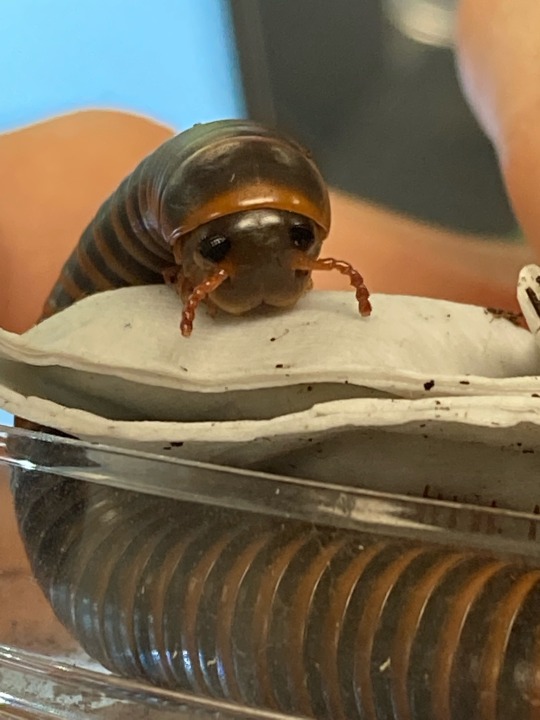
a little known fact is that some millipedes have :3 face and i think that’s beautiful (my pic)
#reminder to self to make the you fuckingn donkey meme but with centipedes vs millipedes#fuck centipedes#sorry#millipedes on the other hand. precious. perfect. my ideal detritivore#slow and friendly#centipedes are nasty fast little fuckers who are out for blood. would bite you just out of spite#biology#invertebrates#invertebrate zoology#zoology#arthopods#arthopoda
14 notes
·
View notes
Text
the true self lives in the false self
#oc#entomology#zoology#insects#pets#arthropods#arachnids#invertebrates#hissing roaches#this is an older video#this roach was named Medusa and she lived to be two and a half years old#Godspeed Medusa
3K notes
·
View notes
Text

Flat Friend Friday!
Flat Friend Friday!
FLAT FRIEND FRIDAY!
#horseshoe crab#marine biology#zoology#marine life#sea creatures#sea critters#marine ecology#cute#invertebrates#flat friend Friday
981 notes
·
View notes
Text
Brachycybe producta
#inaturalist#naturalist#nature#ecology#zoology#biology#wildlife#insect#insects#bug#bugblr#entomology#bugs#insectblr#photography#nature photography#wildlife photography#hawks photos#animal photography#myriapod#myriapods#millipede#millipedes#invertebrates#arthropods#invertiblr
574 notes
·
View notes
Text



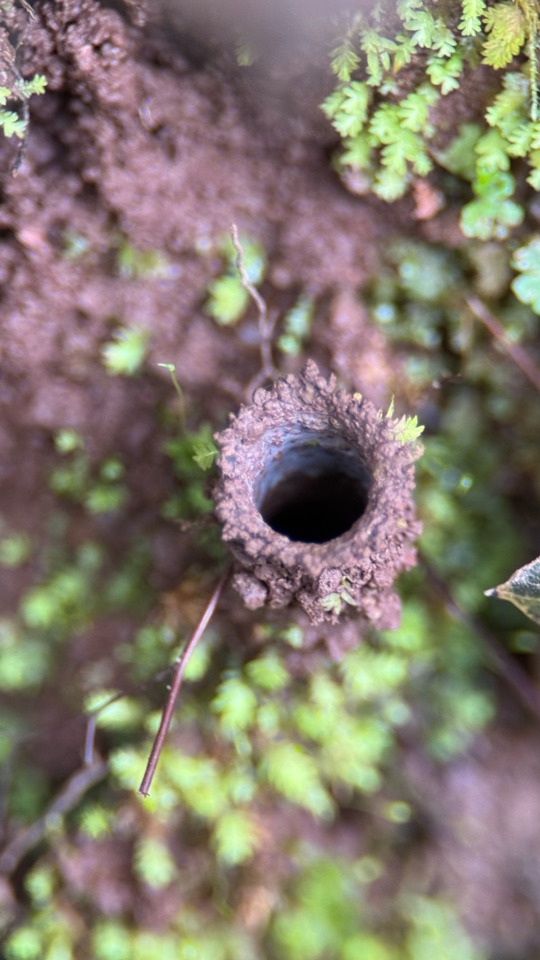

Turret spider burrows
These unique spiders, found only in California, build small towers out of soil, plant matter, and silk. Each turret houses one spider, and the structure serves to both protect the spider and to help it detect vibrations from prey. Turret spiders are nocturnal, so it's rare to actually see one.
Their closest relatives are tarantulas and trapdoor spiders, which together form the mygalomorphs, a relatively "primitive" lineage of spiders.
Atypoides riversi, Santa Cruz Mountains, California
#turret spider#Atypoides riversi#Santa Cruz Mountains#California#nature#bugs#nature photography#arthropods#mygalomorphs#spiders#burrow#turret#biodiversity#bugblr#animals#inaturalist#lair#tube#tunnel#forest#spood#interesting facts#biology#zoology#arachnids#spider#invertebrates
1K notes
·
View notes
Text

Coconut octopus (Amphioctopus marginatus)
#photography#explore#nature#science#adorable#gifs#gif#education#lol#animals#zoology#amazing#awesome#animal#invertebrates#oceans#sea#marine#moving#marine life#marine biology#funny#amphioctopus#coconutoctopus#octopus#cephalopod#pacific ocean
601 notes
·
View notes
Text
Wet Beast Wednesday: vampire squid
It's squidtember, everybody! To celebrate, we'll discuss the vampire squid, which is... not actually a squid. It's not a vampire either. I'll let you decide which is more disappointing. No, the vampire squid isn't a squid or an octopus or even a cuttlefish, it's its own thing, the only surviving member of order Vampyromorphida, a sister group of the octopi. Let's dig into this unique cephalopod.
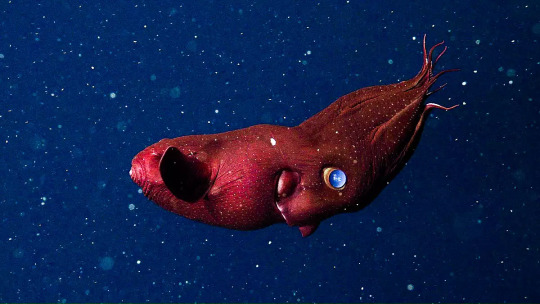
(Image: a vampire squid. It is an octopus-like animal a dark red in color with large eyes and a pair of fins on the mantle. The arms are relatively short and are held together. End ID)
The scientific name of the vampire squid is Vampyroteuthis infernalis, which means "vampire squid from hell". With a name like that you'd expect it to be a badass predator, but it isn't. The name comes from its red color and arm membranes that are visually similar to a cape. They're also on the small side, maxing out at around 30 cm (about 1 foot), half of which is the body and the other half being the arms. The body is mostly a dark red color. Its body plan is similar to an octopus, with eight arms. On the body is a pair of fins and while the skin is covered in bioluminescent cells called photophores, they lack the color-changing chromatophores that allow octopi, squid, and cuttlefish to change their color so radically. The eye of the vampire squid is the largest in proportion to body size of any animal and the vampire squid likely has very good vision. The vampire squid has an internal shell called a gladius that is common to cephalopods but has been lost in octopi. The galdius helps maintain buoyancy, aided by a high concentration of ammonia in the body and inner ear-like organs called statocysts.

(Image: a vampire squid with its arms extended, revealing that they are connected to each other by a membrane that reaches almost to the tips of the arms. End ID)
The arms are connected to each other by a membrane called a cloak. The inner sides of the arms are line with fleshy cirri and only have suckers at the very tips. In between the base of the arms is the beak. Also within the cloak are a pair of pouches that contain the tactile velar filaments (side note: why the fuck does Tumblr's spell check recognize velar but not cephalopod?). The filaments are very long, very slender modified arms that are covered with sensory hairs. The filaments retract back into their pouches when not in use. The filaments are used in feeding similarly to the tentacles of squid, but they are not derived from the same feature. The common ancestor of octopi and vampyromorphids had 10 arms. The octopi eventually lost a pair while the vampyromorphids modified a pair into the filaments.
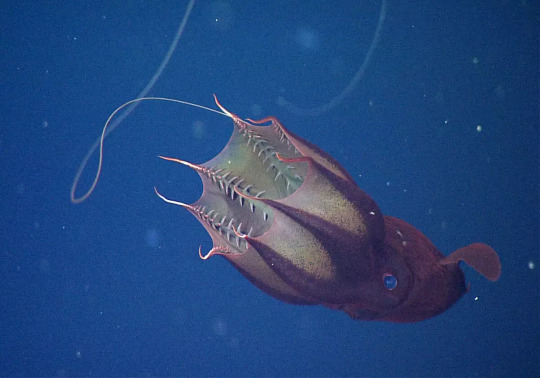
(Image: a vampire squid with one of its filaments extended from within the arms. The filament looks like a long string that is hanging in the water. End ID)
The vampire squid is found worldwide in tropical and temperate latitudes at depths within the midnight zone, where no light reaches. They are extremophiles, organisms that live in extreme environments. This isn't because of being deep-sea organisms, but because of the particular part of the deep sea they are specialized to live in. Vampire squids live in oxygen minimum zones, regions of the deep sea that have drastically lower levels of dissolved oxygen that the surrounding area. Because oxygen is necessary for most life, oxygen minimum zones are very sparsely populated. To survive in such a low-oxygen environment, vampire squids have developed a very low metabolic rate (the lowest of all deep-sea cephalopods) and have very large gills. This allows them to extract every possible bit of oxygen from the water and let it last for a long time. The squid spend their time slowly swimming using their fins for propulsion, keeping movement to a minimum to reduce oxygen use. Food is scarce in the oxygen minimum zones and the vampire squids have adopted a low-energy feeding method. The eyes and velar filaments search through the water for bits of food, which the arms catch. The squid uses a mix of mucus and bodily waste excreted from the suckers to encase the food, forming a lovely mucus dumpling that the squid eats. The bioluminescence may also be used to attract prey. A vampire squid's diet consists largely of marine snow, bits of organic matter that falls from above. Marine snow largely consists of bits of dead animals, but a lot of it is also feces. The vampire squid form hell eats poop. Vampoo-er squid. It also eats zooplankton and maybe small fish, but that's less scandalous
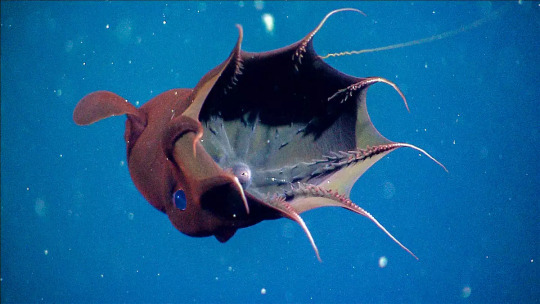
(Image: a vampire squid showing off the inside of its cloak. Each arm is lined with fleshy protrusions called cirri. At the center of the arms in a lump of flesh covering the beak. End ID)
Vampire squids can't afford to spend energy on fighting predators, so they have adapted some unique defense mechanisms. The red coloration is one of these. Red light is the first wavelength of visible light to be filtered out in water and as a result, many deep-sea animals can't see red light. To them, a vampire squid would seem invisible. The first defense mechanism vampire squids use is the pineapple pose, where they wrap their arms and cloak around their bodies to look like a spiky ball. If that doesn't deter predators, the squid can release sticky, glowing mucus from its suckers. This mucus can disorient the predator and will stick to it, making it vulnerable to predators of its own. While making an escape, the squid will use its bioluminescence to disorient the predator, especially flailing its glowing arms to create a very confusing sight. It can regrow the ends of its arms, making them an acceptable sacrifice if it means surviving the encounter.

(Image: a vampire squid in the pineapple pose. Its arms and cloak are covering its body, exposing the cirri. This makes it look like a round object lined with rows of spines. End ID)
Like its octopus relatives, the vampire squid reproduces via the male inserting a packet of sperm into a hole in the female's mantle. The female can store the sperm for long periods of time until she is ready to use it. They may also be able to use only part of the sperm supply at a time while reserving the rest. While squid, cuttlefish, and octopi only mate once before dying, vampire squid appear to mate multiple times in their lives. Eggs may take over a year to hatch and the juveniles are born as 8-mm miniature versions of the adults. The juveniles live in deeper water than the adults and survive on an internal yolk sac for some time after hatching. Curiously, the juveniles are born with a single pair of fins, then grow another pair as they mature. Eventually the original pair of fins is lost and the new pair will chance shape and placement during maturation. This has led to vampire squids of different development stages being misidentified as different species in the past.

(Image: a juvenile vampire squid. It's arms are shorter and it has two pairs of fins. End ID)
Vampire squid are classified as data deficient by the IUCN, meaning there is not enough data to determine what conservation needs they have. Their worldwide distribution indicates they are likely not at risk of extinction. They are believed to be vulnerable to microplastics, which drift downward like marine snow and are very likely to be mistaken for food by the squid. Microplastics can carry chemical loads that could be poisonous to the squid and can obstruct the digestive tract or trick the animal into thinking it is well-fed when it is actually full of indigestible plastic. Vampire squid are known to be prey to large fish and deep-diving marine mammal like toothed whales or seals. The vampire squid was discovered by the Valdivia Expedition of 1898-99 and was one of the animals caught that helped disprove a then-accepted hypothesis that the deep sea was lifeless. The azoic hypothesis or abyssus theory stated that ocean life diminished with depth and that, by extrapolating the existing numbers, the ocean would be lifeless below about 300 fathoms (550 m, 1,800 ft). The vampire squid was one of the earliest examples of animals captured from below that depth.
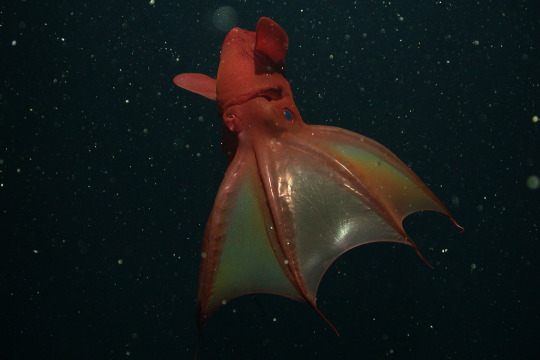
(Image: a vampire squid with its arms and cloak extended. End ID)
#wet beast wednesday#vampire squid#squid#cephalopod#mollusk#molluscs#deep sea creatures#invertebrates#marine biology#marine life#biology#ecology#zoology#animal facts#squid tember#educational#informative#image described
451 notes
·
View notes
Text
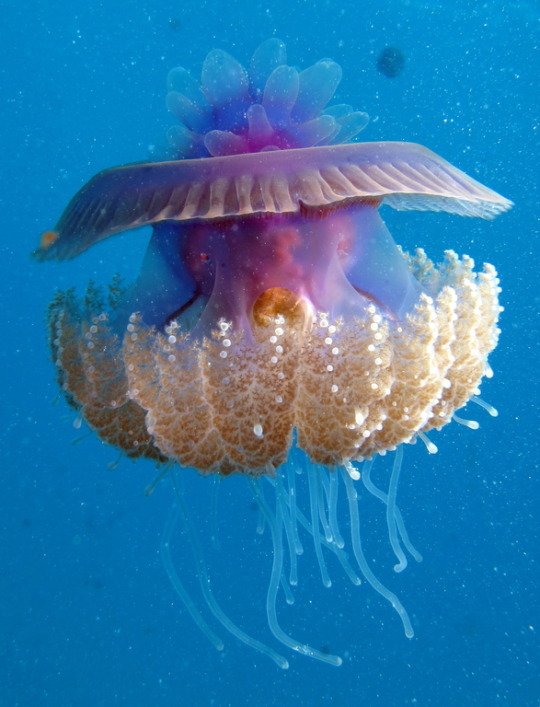

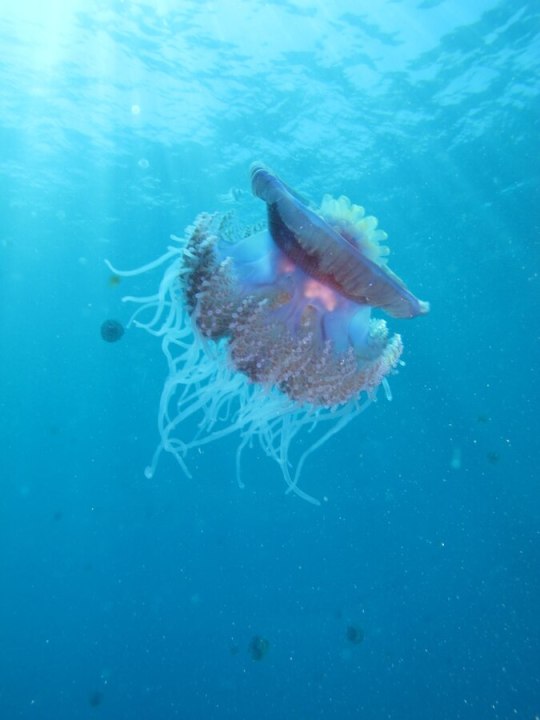
Bow Down to the Crown Jellyfish
The crown jellyfish (Cephea cephea), also known as the cauliflower jellyfish, is a species of jellyfish found primarily in the open waters of the Indo-Pacific Ocean, from the surface up to a depth of 915 m (3,000 ft). They spend most of the day in deeper waters, and then rise to the surface at night to feed.
Like most jellyfish, C. cephea is a filter feeder. The bulk of their prey consists of algae, shrimp, plankton, invertebrate eggs and invertebrate larvae. Although they are venomous, they are not considered a threat to humans. Rather, it's venom is designed to deter its natural predator, sea turtles.
The crown jellyfish is named for its distinctive appearance. The 'bell', or umbrella is bright purple, up to 60 cm (23 in) across, and situated in the middle is a bulb of multiple protruding round spikes. Beneath is a cauliflower-shaped mass, often white or yellow, from which the 30-40 thin tentacles descent. In addition to its bright coloring, the cauliflower jellyfish is also notable for being bioluminescent at night and in the darker depths of its range; the purpose of this light show is unclear.
C. cephea is a broadcast spawner, meaning that females and males both release their reproductive material into the open water. The fertilized eggs hatch into microscopic larvae, which then floats through the ocean for months or even years until it encounters a rock, coral, or other sedentary object. There, it grows into a structure called a polyp that filter feeds on passing plankton for another several weeks. When it gets big enough, it undergoes strobilation, in which layers peel off to become tiny jellyfish. These baby crown jellyfish grow extremely quickly, starting at only 2-3 mm (0.07-0.11 in), but grow to to 1.7 cm (0.66 in) in only a few weeks. Once they reach their adult size, they only live for 3-6 months.
Conservation status: The crown jellyfish has not been listed by the IUCN. Due to its large population size and range, it is considered stable, and may even be expanding its range due to warming oceanic waters.
Photos
Derek Keats
Alexia Pihier
#crown jellyfish#Rhizostomeae#Cepheidae#medusae jellyfish#jellyfish#cnidarians#invertebrates#marine fauna#marine invertebrates#pelagic fauna#pelagic invertebrates#open ocean#open ocean invertebrates#Indian Ocean#Pacific Ocean#indo-pacific#animal facts#biology#zoology#ecology
270 notes
·
View notes
Text


A new Animal Fictions vs Animal Facts, just in time for Halloween!
Did you hear this myth growing up? Which type of animal was your “daddy longlegs”?
#Animal Fictions Vs Animal Facts#infograph#dispelling myths#Daddy Longlegs#Daddy Long Legs#Grandaddy Longlegs#Harvestman#Opiliones#Cellar Spider#Pholcidae#spiders#arachnids#crane fly#fly#insect#arthropods#invertebrates#zoology
283 notes
·
View notes
Text




John Vaughan Thompson – Scientist of the Day
John Vaughan Thompson, an Army surgeon who dabbled in marine biology, was born Nov. 19, 1779, on Long Island in the United States...
learn more
#John Vaughan Thompson#invertebrate zoology#marine biology#barnacles#histsci#histSTM#19th century#history of science#Ashworth#Scientist of the Day
25 notes
·
View notes
Text
It’s been a while since we’ve done a biology puzzle so I kind of want to play a game I like to call “shopping list” that I play in my head whenever I’m in a waiting room. I’ve tweaked it a little to play as a multiple choice quiz.
The idea of the game is recruiting different animal species (based on name alone) for a certain activity. So for example, if the activity is “playing Dungeons and Dragons” and you see the following animals…
A. Thompsons gazelle
B. Dice snake
C. Goblin shark
D. Crab eater seal
E. African land snail
F. Dragonfly
Then your answer would be B, C, F (for dice, goblins, and dragons).
So let’s try our first one! The activity is…
Gift- wrapping a present
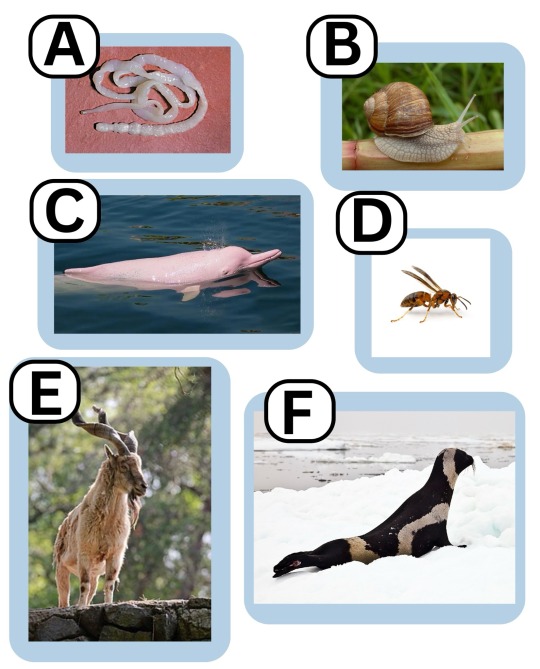
Answer: _ _ _
305 notes
·
View notes
Text

Sea anemone (Boloceroides sp.) By: Dr. Jonathan P. Green From: The Science of Zoology 1966
110 notes
·
View notes
Text

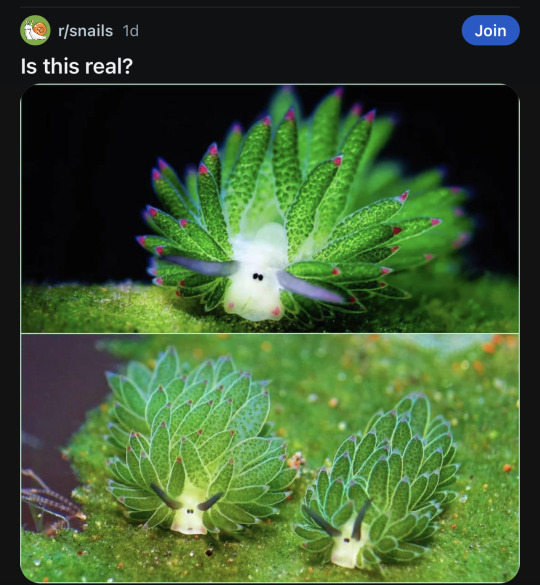




my Reddit feed never fails to satisfy
#entomology#zoology#insects#arachnids#arthropods#bug#bugblr#insect#invertebrate#Reddit#biology#memes
1K notes
·
View notes